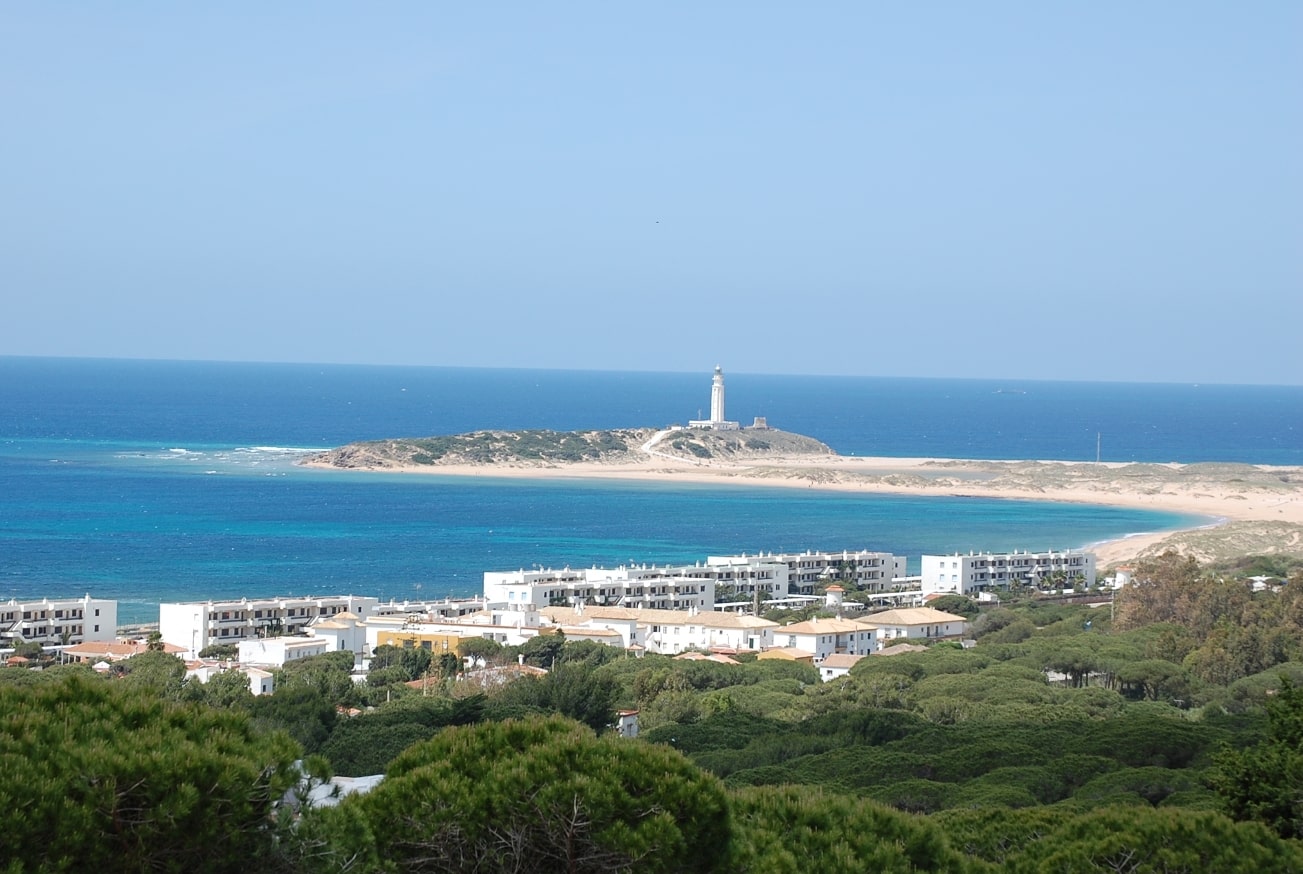Tómbolo de Trafalgar
Monumento Natural Tómbolo de Trafalgar
Cerca de Caños de Meca, el tómbolo de Trafalgar es una de las maravillas naturales de la zona, incluye el Cabo Trafalgar y el pequeño istmo (lengua de arena) que lo une con tierra. Su bello paisaje mezcla dunas de fina arena, extensas playas y una zona rocosa sobre la que se asienta el faro. Fue declarado monumento natural por la junta de Andalucía en 2001 por su valor geológico y ocupa una superficie de casi 25 hectáreas.
La arena arrastrada por las mareas creó hace miles de años un doble tómbolo que unió el islote con la costa. Al retirarse el mar, el viento originó sistemas dunares en las playas al sur del islote, contribuyendo a su fosilización. En la antigua costa, el viento de levante desarrolló otro sistema dunar, hoy cubierto de sabinas y lentiscos.
En el pequeño promontorio del faro existen varios yacimientos arqueológicos, entre ellos destaca una factoría romana de salazón y un templo romano dedicado al Dios Juno. Los árabes construyeron en el S. IX una torre de vigilancia, la Torre de Trafalgar y cuyos restos aún pueden verse junto al faro.

La Batalla de Trafalgar
Frente al tómbolo de Trafalgar se desarrolló el 21 de octubre de 1805, la famosa batalla naval en la que se enfrentaron la escuadra combinada de España y Francia, al mando del francés Pierre Villeneuve, asistido por el español Federico Gravina, y la armada inglesa, al mando de Horatio Nelson. La flota combinada contaba con 33 navíos, (18 franceses y 15 españoles), mientras que la flota inglesa se componía de 27. Frente al despliegue en línea de las divisiones franco-españolas, la escuadra inglesa avanzó en dos columnas paralelas, perpendiculares a la línea única de la escuadra combinada. Villeneuve reaccionó ordenando el viraje de todos sus barcos a la vez, para no renunciar así a la posibilidad de regresar a Cádiz en caso de necesidad. Éste movimiento provocó el desconcierto de la escuadra franco-española, cuyo orden quedó invertido y su alineación deformada. La victoria de los ingleses fue rotunda y permitió a Inglaterra tener la supremacía naval en los siguientes 100 años.
» ¿Tienes dudas? Consulta nuestras preguntas frecuentes.
